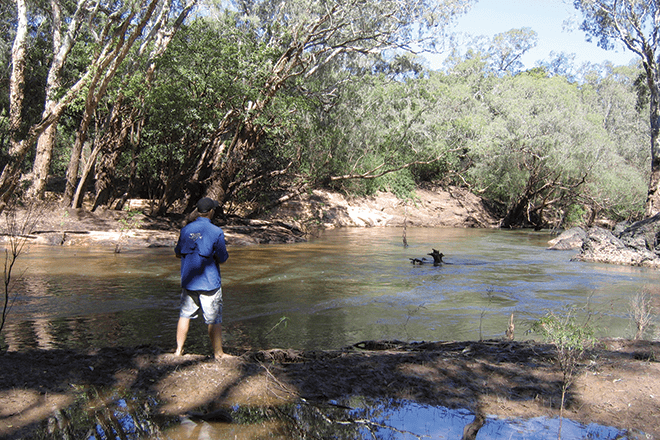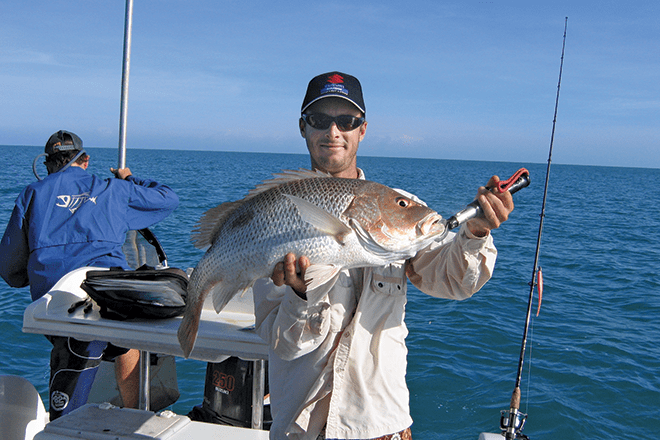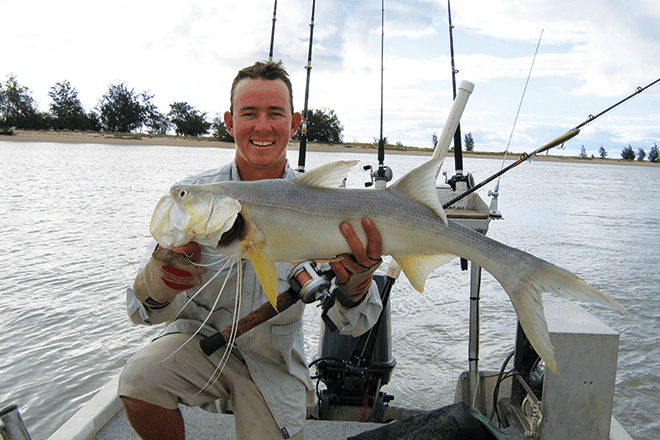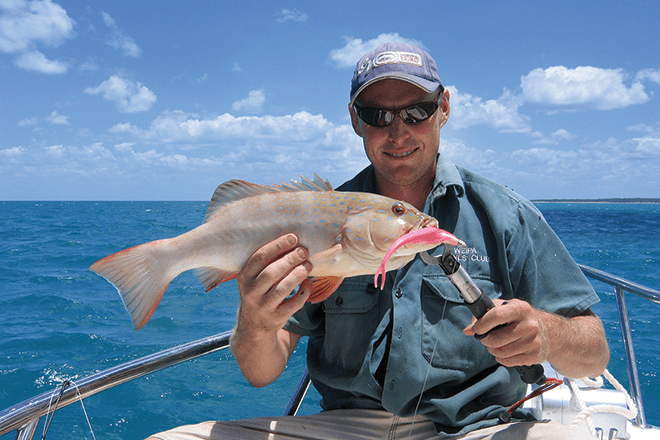WELL last month’s prediction about the potential for some dry season showers proved to be correct – if in fact understated!
May saw unseasonal rain across much of Cape York, some of which was fairly substantial and will certainly impact our Cape York fishing. Here on the Wenlock River we scored a surprising 90mm, Weipa only slightly less.
On the east coast and particularly in the greater Cooktown area, a number of May rainfall records were broken. Major river rises occurred in the Normanby, Annan, Endeavour and Pascoe rivers, with minor rises in the Wenlock and Archer. An unofficial 24-hour total of 311mm was reported not far from Cooktown, which is fairly impressive for a ‘dry season’ month.
In most places things have returned to normal. However, Cape Melville National Park will not open until August 1, and the northern part of
Rinyirru (Lakefield) will only open steadily as conditions dry out and rangers complete campsite preparations. A number of reports have come in of barramundi in lower estuaries disappearing or going off the bite immediately following the rain.
Some suggested that the fish may have headed to spawning grounds for a late-season breed – a distinct possibility given the river freshes and still-high water temperatures. While that may partially be the case, it has become apparent that good numbers of these chrome-plated beauties swam upstream to feed at the rain-rejuvenated run-off features.



So in many areas drains, gutters, small creeks, small waterfalls and cascades should all continue to fish well into July, barring any cold snaps. These sorts of features can be hugely exciting and productive to work with soft plastics, hard-bodied lures and of course the ever-popular live baits of fish and prawns.
Never discount fishing at night too, using a head spotlight to keep your hands free for fishing. Poppers and fizzers can be particularly productive during the dark hours, and watching a barra home in on the noise and splash is truly memorable. Barramundi, saratoga and tarpon all have reflective red eyes when spotted with a light.
Tarpon are usually the most visually active, swimming around constantly like a keen kelpie working sheep. To keep to the dog analogy, barra and toga are more like border collies; certainly very active but not almost always moving. Reports are coming in of good barra catches in the lower estuaries, so it seems the fish have dispersed somewhat.
As the water cools, tidal waters generally become more productive than the freshwater reaches, where barra can often suffer from lockjaw. And of course, many other species are also on offer. Good threadfin salmon have recently been taken in the Weipa area and theadies are also usually prevalent in the lower Normanby and North Kennedy rivers.
July typically sees the arrival of decent numbers of grunter (sometimes known as javelin fish) in the estuaries. These tasty fish are usually captured on bait, live or dead, and occasionally lures, often over rubbly ground. We have found soft plastics to be the most productive lures.
Catches of jewfish have been taken recently in the northern Gulf of Carpentaria estuaries, mostly on live baits of mullet and herring. These mighty animals also inhabit some of the Gulf reefs, along with fingermark and the staple species in such habitats of tuskfish and coral trout, and in places, red emperor.
While pilchards are favoured baits for all these species, soft plastics such as Berkley Gulps can really fire when jigged up from the bottom. Sadly, there has been some bleaching of Gulf corals as well as those along the Great Barrier Reef. Here’s hoping for a good recovery as the water cools.
The other hot fishing action at this time of year in the northern Gulf waters is provided by longtail tuna. Hauling a metal slug through a school of feeding tuna and getting smashed is something else. And of course there’s usually some marauding spaniards, trevally and queenfish around to add variety and a good dose of extra spice.
Safe travels and happy fishing.
To me, the best anglers are simply those who enjoy it the most!
 Bush ‘n Beach Fishing Magazine Location reports & tips for fishing, boating, camping, kayaking, 4WDing in Queensland and Northern NSW
Bush ‘n Beach Fishing Magazine Location reports & tips for fishing, boating, camping, kayaking, 4WDing in Queensland and Northern NSW









